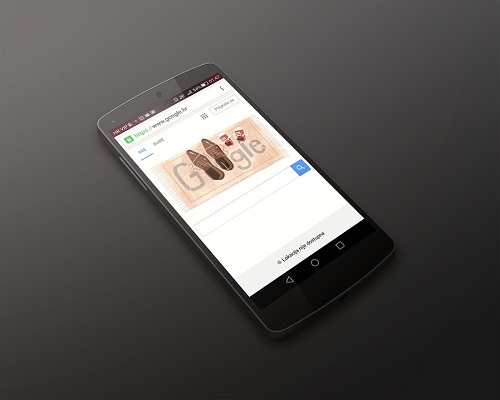After rumors have been circulating on the subject for a long time, the tech giant made its official announcement.
For a long time, rumors have been circulating about a replacement for the Nexus line and now Google Pixel has been announced. The tech giant has announced a new line of high end smartphones. These will take the place of the Nexus flagship mobile devices.
There have been leaks popping up all over the web for the Google Pixel (Sailfish) and the Pixel XL (Marlin).
The company has announced the Google Pixel’s existence and has been suggesting that an October 4 unveiling could be expected. It had been indicating that the unveiling would break away from the traditional rectangle and would be made of an oblong with rounded edges. That said, one of the Google websites (madeby.google.com) is indicating a device with the classic rectangle shape. It contains a graphic that starts from the look of the Google query box and that transforms into a phone. Aside from that graphic, the webpage says “Oct. 4” as well as the Google “G” symbol and the opportunity to enter an email address to receive notifications of updates.
The Google Pixel will be the next among a number of hardware products released with its branding.
 Though there had been recent rumors and claims of leaks that showed two new Nexus phones built by HTC, those plans have changed. In August, Android Central reported that the new HTC devices would no longer bear the Nexus name. Moreover, another source, Android Police, recently reported that upcoming Pixel and Pixel XL devices would become “the first phones built by Google.”
Though there had been recent rumors and claims of leaks that showed two new Nexus phones built by HTC, those plans have changed. In August, Android Central reported that the new HTC devices would no longer bear the Nexus name. Moreover, another source, Android Police, recently reported that upcoming Pixel and Pixel XL devices would become “the first phones built by Google.”
The teaser webpage created by Google appears to be confirming the claim Android Police had made. That said, the Android Police report said HTC would be manufacturing the devices, despite the fact that Google designed them.
The industry has been watching the tech brand for a new device such as smartphones ever since the Project Ara experimental modular phone initiative was shut down.
It will be interesting to see what predictions and reports make it on to the scene until the official Google Pixel launch on October 5.
Denny |
September 7, 2016
Emerging markets are continuing to exhibit positive growth, but as a whole it is declining in developed regions.
According to the Worldwide Quarterly Mobile Phone Tracker from the International Data Corporation (IDC), smartphone sales are declining as expected. Many forecasts pointed to an overall slowdown of mobile phone sales in 2016. This is linked to a reduction in sales in developed regions.
Despite the positive growth that continues in emerging markets, it isn’t enough to keep the entire marketplace’s pace.
The report showed that much of the smartphone sales currently occurring in developed regions is in replacements. The rate of new users has decreased substantially as penetration within these populations is now very high. The report predicted a 1.6 year over year growth of smartphone shipments in 2016. This, upon the shipment of 1.46 billion units by the end of the year. That may appear to be a healthy number, but it is a fraction of what it was last year. In 2015, the year over year growth rate for smartphone shipments was 10.4 percent.
As a whole, developed markets are expected to see a negative growth rate in smartphone sales.
 The report took the United States, Canada, Western Europe and Japan into its definition of developed markets. Within that region, the IDC predicts a -0.2 percent compound annual growth rate (CAGR). Emerging markets were made up of Central and Eastern Europe, the Asia Pacific Region (except for Japan), Africa, the Middle East and Latin America. They are expected to see a 5.4 percent CAGR throughout the forecast period of 2015 to 2020.
The report took the United States, Canada, Western Europe and Japan into its definition of developed markets. Within that region, the IDC predicts a -0.2 percent compound annual growth rate (CAGR). Emerging markets were made up of Central and Eastern Europe, the Asia Pacific Region (except for Japan), Africa, the Middle East and Latin America. They are expected to see a 5.4 percent CAGR throughout the forecast period of 2015 to 2020.
Senior IDC research analyst at the Worldwide Quarterly Mobile Device Trackers, Jitesh Ubrani, said “Growth in the smartphone market is quickly becoming reliant on replacing existing handsets rather than seeking new users.” Ubrani also stated that from the point of view of the tech side, innovation is “in a lull.” Consumers have greatly reduced their inclination to purchase the latest device with all the newest bells and whistles. Instead, they are satisfied with mobile devices that are “good enough.”
Telcos have been working hard to breathe life back into their smartphone sales. Programs such as trade-ins and buy-backs are geared toward shortening lifecycles and increasing the inclination to purchase early replacements.
![]() Though there had been recent rumors and claims of leaks that showed two new Nexus phones built by HTC, those plans have changed. In August, Android Central reported that the new HTC devices would no longer bear the Nexus name. Moreover, another source, Android Police, recently reported that upcoming Pixel and Pixel XL devices would become “the first phones built by Google.”
Though there had been recent rumors and claims of leaks that showed two new Nexus phones built by HTC, those plans have changed. In August, Android Central reported that the new HTC devices would no longer bear the Nexus name. Moreover, another source, Android Police, recently reported that upcoming Pixel and Pixel XL devices would become “the first phones built by Google.”
 The report took the United States, Canada, Western Europe and Japan into its definition of developed markets. Within that region, the IDC predicts a -0.2 percent compound annual
The report took the United States, Canada, Western Europe and Japan into its definition of developed markets. Within that region, the IDC predicts a -0.2 percent compound annual 